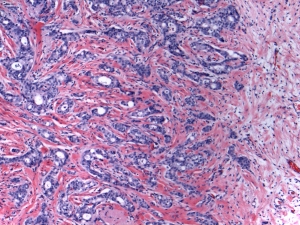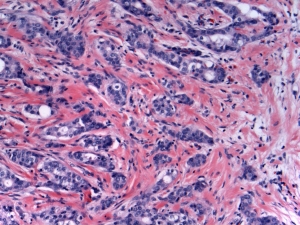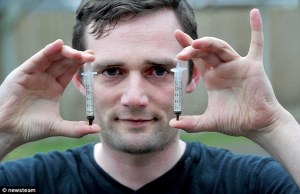The first post on this blog was posted in November 2008, and it was about an Italian ex doctors claim that “cancer is a sodium bicarbonate sensitive fungus”. The idea that sodium bicarbonate is an effective cancer treatment still exists, but most people have accepted that the idea that cancer is a fungus is demonstrably wrong.
In fact many Simoncini proponents even think that Simoncini doesn’t claim that cancer is a fungus- He is just not very good at English.
Well – as it happens, I stumbled upon an article from Sweden that allegedly confirms what Simoncini has been saying all along.
The journal it is published in is called “2000-Talets Vetenskab” , which translates into “Science of the 2000’s”. As you might have guessed this journal is not really a scientific journal. It is a journal promoting pseudoscience. They endorse people like for example Matthias Rath.
Another person endorsed by the journal is an ex doctor named Erik Enby. According to a blog post (in Swedish) by a Swedish cancer patient, Enby was delicenced following deaths of two cancer patients. One of them was a 39 years old mother of three, who was diagnosed with breast cancer and declined surgery on the advice of Enby. One year later she had died. The other patient was a 58 years old woman who had liver cancer that had spread. He sold her for 9000 kroner (≈1300 $) vitamins and minerals. After three days her condition derteriorated. She died within a few weeks.
Enby has published an article in the journal in English titled “A breast cancer tumor consisted of a spore-sac fungus (ascomycota)”. Sure enough – The article has found its way to Simoncinis website (The Italian version).
So what are we told in this article?
In the header it says that it is peer reviewed article. This sounds impressive, but it matters who did the peer review. If a peer reviewer is clueless about cancer diagnostic including cancer anatomy, his/her review of a paper that is about these things is worse than useless. We will see in a moment what sloppy review leads to.
If we look at the structure of the article we can see that the layout is similar to what is seen in scientific research papers. So superficially it looks sciency. But it is the content that is important if we are to be impressed. So let’s see what we can find.
Materials and methods:
We are told that the patient was a female who felt a lump in her breast. So far so good. We are not told her age as is costumary in case reports im medical journals. And we are not told if she suffered from other illnesses. This is important int this case, because some diseases may predispose to fungal infections.
We are also told that the patient was diagnosed and treated at the Sahlgrenska University Hospital in Gothenburg. This is a hospital Enby knows, because he worked there as a doctor in the geriatrics department until his retirement in 2004. There is one important piece of information that is left out: How was the cancer diagnosis determined? Clinical examination and a mammogram is not enough. Even a fine needle biopsy may be false positive.
Then we are told that surgery was performed and chemotherapy was started. Again some important information is missing: What type of chemotherapy was started? Chemotherapy means treatment of disease with chemicals/drugs. Some drugs are used to treat cancer. Other drugs are used to treat other diseases like for instance fungal infections.
It sounds strange that he
..managed to get six cancer samples that was prepared at the Department of Pathology, Sahlgrenska University Hospital.
Why would the pathology department hand over their sections to a former geriatrist who had been delicensed because of cancer quackery??
And then there is this paragraph:
I could immediately see that the sample consisted of a spore-sac fungus (Ascomycota/Ascomycetes/Sac fungi/Spor-sac fungi) that grew in the sample which appeared to completely consist of such a fungus 2.
To see that something are fungi is really not that difficult. It is seen on a daily basis in every pathology department. Here is an example from a biopsy which was not suspicious of cancer, but still is a fungal colony. The photos show a PAS staining of them at 200 and 400 times magnification respectively. Regarless of the different staining methods, I think the resemblance to what is shown in Enbys article is obvious.


There is something important missing in Enby’s descrpition as well as in the microscopy photos he brings. There is no description of or depiction of cancer cells. If something is to be called cancer, it has to contain cancer cells. If it doesn’t it is called something else. Here are some photografhs showing cancer cells as well as the tumour stroma (long story) at 100, 200 and 400 times magnification respectively.



In case anyone wonders – There were no fungal structures in this cancer.
Discussion:
In this part of the article Enby fails to discuss an important aspect of relevance to the case he presents. Can a fungal infection present as a tumour in the breast? The answer is yes. It is rare, but there have been reports of fungal infection presenting as tumours (Not cancers) in breasts. See for instance this case report.
Conclusion:
Again Enby fails to draw the most obvious conclusion: The mass that consisted of fungis is not a cancer, because to be a cancer it has to contain cancer cells. Calling the article a scientific article is misrepresenting science. It is clear that this article isn’t written for the scientific community. It is plausible that it is convincing to people who already believe in this myth. But explanation of why the conclusion is wrong is not complicated.
Does this case report illustrate aspects of relevance to alternative cancer cure testimonials?
The article is basically a failed attempt at documenting the idea that cancer is (at least sometimes) a fungus. There is no alternative (to) medicine treatment involved in this case. But it does illustrate part of the problem in miraculous natural cancer cure testimonials that are all over the internet. Some years back, Peter Moran wrote a good blog post about what to look for in cancer cure testimonials. If you are unfamiliar with it, I certainly recommend that you read it.
I will just sum up some major points on what can be wrong with these testimonials:
1) It might not even have been cancer
2) The cancer may have been removed as part of the diagnostic procedure
3) The alternative therapy may have been used alongside conventional treatment, which may be what actually delivered the cure. Even a biopsy may sometimes be curative.
4) The cancer might not have disappeared after all
5) The testimonial may be pure fabrication.
There is no doubt that 1) applies to the case described by Enby. He clearly explains, that the tumor consisted entirely of fungal spores and hyphes. And his photos document that there were no cancer cells in this tumour. So this tumour was demonstrably not a cancer.
Since no alternative therapy was used 2) – 4) are not issues with this case.
It cannot be ruled out that 5) partially applies to this case. As far as we can tell, the breast cancer diagnosis might not have been the final diagnoses that guided the treatment. I am unable to find any reference to this case in the real scientific literature. It is certainly unusual enough to make it publishable as a case report.
I have emailed the pathology department at Sahlgrenska University Hospital and asked them if they can confirm the existence of this case. And if they can clear up some of the confusion Enby’s version creates. If they reply, I will update this post.
 Cancer Research UK Science Update Blog
Cancer Research UK Science Update Blog Respectul Insolence
Respectul Insolence Science-Based Medicine
Science-Based Medicine Edzard Ernst
Edzard Ernst











Recent comments